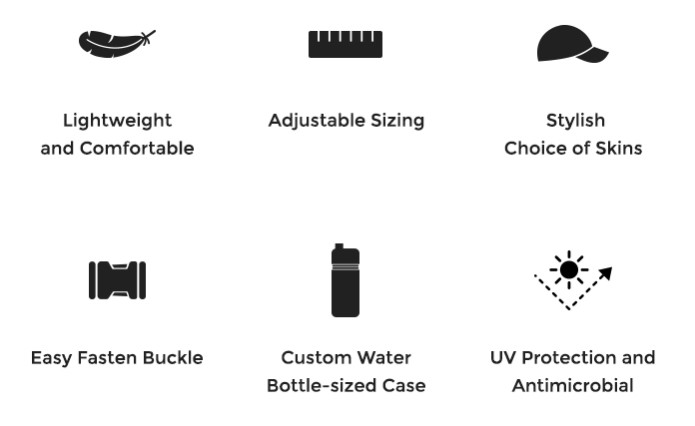Summary and key findings
The United States has a massive trade deficit with China. The growth of the U.S. trade deficit with China, which has increased by more than $100 billion since the beginning of the Great Recession, almost entirely explains why manufacturing employment has not fully recovered along with the rest of the economy. And the growing trade deficit with China isn’t just a post-recession phenomenon hitting manufacturing: it has cost the U.S. millions of jobs throughout the economy since China entered the World Trade Organization (WTO) in 2001, a finding validated by numerous studies.
This report underscores the ongoing trade and jobs crisis by updating EPI’s research series on the jobs impact of the U.S.–China trade deficit. The most recent of these reports (Scott 2012; Kimball and Scott 2014; Scott 2017a) look at the effect of the U.S. trade deficit with China since China entered the WTO in 2001. Our model examines the job impacts of trade by subtracting the job opportunities lost to imports from those gained through exports. As with our previous analyses, we find that because imports from China have soared while exports to China have increased much less, the United States is both losing jobs in manufacturing (in electronics and high tech, apparel, textiles, and a range of heavier durable goods industries) and missing opportunities to add jobs in manufacturing (in exporting industries such as transportation equipment, agricultural products, computer and electronic parts, chemicals, machinery, and food and beverages).
The growing trade deficit with China since China entered the WTO affects different regions in different ways. Some regions are devastated by layoffs and factory closings while others are surviving but not growing the way they could be if new factories were opening and existing plants were hiring more workers. This slowdown in manufacturing job generation is also contributing to stagnating wages of typical workers and widening inequality.
Following are the key highlights of this report:
U.S. jobs lost are spread throughout the country but are concentrated in manufacturing, including in industries in which the United States has traditionally held a competitive advantage.
- The growth of the U.S. trade deficit with China between 2001 and 2017 was responsible for the loss of 3.4 million U.S. jobs, including 1.3 million jobs lost since 2008 (the first full year of the Great Recession, which technically began at the end of 2007). Nearly three-fourths (74.4 percent) of the jobs lost between 2001 and 2017 were in manufacturing (2.5 million manufacturing jobs lost).
- The growing trade deficit with China has cost jobs in all 50 states and in every congressional district in the United States. The 10 hardest-hit states, when looking at job loss as a share of total state employment, were New Hampshire, Oregon, California, Minnesota, North Carolina, Rhode Island, Massachusetts, Vermont, Wisconsin, and Texas. Job losses in these states ranged from 2.57 percent (in Texas) to 3.55 percent (in New Hampshire) of total state employment. The five hardest-hit states based on total jobs lost were California (562,500 jobs lost), Texas (314,000), New York (183,500), Illinois (148,200), and Pennsylvania (136,100).
- The trade deficit in the computer and electronic parts industry grew the most: 1,209,000 jobs were lost in that industry, accounting for 36.0 percent of the 2001–2017 total jobs lost. Not surprisingly, the hardest-hit congressional districts (those ranking in the top 20 districts in terms of jobs lost as a share of all jobs in the district) included districts in Arizona, California, Illinois, Massachusetts, Minnesota, New York, Oregon, and Texas, where jobs in that industry are concentrated. A district in Georgia and another in North Carolina were also especially hard hit by trade-related job displacement in a variety of manufacturing industries, including computer and electronic parts, textiles and apparel, and furniture.
- Surging imports of steel, aluminum, and other capital-intensive products threaten hundreds of thousands of jobs in key industries such as primary metals, machinery, and fabricated metal products as well.
- Global trade in advanced technology products—often discussed as a source of comparative advantage for the United States—is instead dominated by China. This broad category of high-end technology products includes the more advanced elements of the computer and electronic parts industry as well as other sectors such as biotechnology, life sciences, aerospace, and nuclear technology. In 2017, the United States had a $135.4 billion trade deficit in advanced technology products with China, and this deficit was responsible for 36.1 percent of the total U.S.–China goods trade deficit that year. In contrast, the United States had a $24.5 billion trade surplus in advanced technology products with the rest of the world in 2017.
Growing trade deficits are also associated with wage losses not just for manufacturing workers but for all workers economywide who don’t have a college degree.
- Between 2001 and 2011 alone, growing trade deficits with China reduced the incomes of directly impacted workers by $37 billion per year, and in 2011 alone, growing competition with imports from China and other low wage-countries reduced the wages of all U.S. non–college graduates by a total of $180 billion. Most of that income was redistributed to corporations in the form of higher profits and to workers with college degrees at the very top of the income distribution through higher wages.
The U.S. trade deficit with China has increased since China entered into the WTO
U.S. proponents of admitting China into the World Trade Organization frequently claimed that letting China into the WTO would increase U.S. exports, shrink the U.S. trade deficit with China, and create jobs in the United States. In 2000, President Bill Clinton claimed that the agreement then being negotiated to allow China into the WTO would create “a win-win result for both countries.” Exports to China “now support hundreds of thousands of American jobs,” said Clinton, and these figures “can grow substantially with the new access to the Chinese market the WTO agreement creates” (Clinton 2000, 9–10).
China’s entry into the WTO in 2001 was supposed to bring it into compliance with an enforceable, rules-based regime that would require China to open its markets to imports from the United States and other nations by reducing Chinese tariffs and addressing nontariff barriers to trade. Promoters of liberalized U.S.–China trade argued that the United States would benefit because of increased exports to a large and growing consumer market in China. The United States also negotiated a series of special safeguard measures designed to limit the disruptive effects of surging imports from China on domestic producers.
However, China’s trade-distorting practices, aided by China’s currency manipulation and misalignment and its suppression of wages and labor rights, resulted in a flood of dumped and subsidized imports that greatly exceeded the growth of U.S. exports to China. These trade-distorting practices included extending large subsidies to industries such as steel, glass, paper, concrete, and renewable energy industries and rapidly growing its state-owned enterprises, both of which generated a massive buildup of excess capacity in a range of these sectors. This excess capacity created a supply of goods far exceeding Chinese consumer demand, and China dealt with the oversupply by dumping the exports elsewhere, primarily in the United States (Scott 2017a).
The promised surge of U.S. exports to China was also hampered by China’s failure to implement certain policies to increase domestic demand for goods, including goods produced by trading partners. Specifically, for China to become a better market for U.S. exports, it needed to stimulate the growth of domestic consumption through policies that would allow workers to organize and bargain collectively, thus raising wages. China also needed to increase domestic consumption through increased social spending and reductions to the country’s massive savings rate (Scott 2017a). Such policies are all elements of a program of domestic, demand-led growth that the United States, other advanced countries, and international agencies have called on China to implement for many years. But none of these policies have been implemented at anywhere near a large enough scale, and China’s national savings rate has actually increased significantly over the past 15 years (Setser 2016; IMF 2018), which has contributed to the growth of U.S. trade deficits (Bernstein 2016).
In addition, the WTO agreement spurred foreign direct investment (FDI) in Chinese enterprises and the outsourcing of U.S. manufacturing plants, which has expanded China’s manufacturing sector at the expense of the United States, thereby affecting the trade balance between the two countries. Finally, the core of the agreement failed to include any protections to maintain or improve labor or environmental standards or to prohibit currency manipulation. (The descriptions in this paragraph derive from Scott 2017a.)
As a result of these forces, the U.S. trade deficit with China soared after China entered the WTO.
Table 1 displays changes in the U.S.–China goods trade deficit and job displacement from 2001 to 2017 (when the term “trade deficit” is used in this report, it always refers to the goods trade deficit). As the table shows, imports from China increased dramatically in this period, rising from $102.3 billion in 2001 to $505.6 billion in 2017. U.S. exports to China rose at a rapid rate from 2001 to 2017, but from a much smaller base, from $19.2 billion in 2001 to $130.4 billion in 2017. As a result, China’s exports to the United States in 2017 (“U.S. general imports”) were nearly four times greater than U.S. exports to China. These trade figures make the China trade relationship the United States’ most imbalanced trade relationship by far (authors’ analysis of USITC 2018).
Overall, the U.S. goods trade deficit with China grew from $83.0 billion in 2001 to $375.2 billion in 2017, an increase of $292.2 billion. Put another way, since China entered the WTO in 2001, the U.S. trade deficit with China has increased annually by $18.3 billion, or 9.9 percent, on average. Although not shown in the table, we can also examine the trade deficit in another way—not by how much it grew annually, but by adding up what the total deficit was each year to produce a cumulative figure. The data reveal that the cumulative U.S. trade deficit with China over the 2002–2017 (post-WTO) era was $4.2 trillion (USITC 2018 and authors’ calculations).
Between 2008 and 2017, the U.S. goods trade deficit with China increased $108.9 billion. This 40.9 percent increase occurred despite the Great Recession–induced collapse in world trade between 2008 and 2009 and the 23.4 percent decline in the U.S. trade deficit with the rest of the world between 2008 and 2017. As a result, China’s share of the overall U.S. goods trade deficit increased from 32.2 percent in 2008 to 46.5 percent in 2017. (The figures in this paragraph derive from the authors’ analysis of USITC 2018 and U.S. Census Bureau 2018c.)
The growing trade deficit with China has led to U.S. job losses
Each $1 billion in exports to another country from the United States supports some American jobs. However, each $1 billion in imports from another country leads to job loss—by eliminating existing jobs and preventing new job creation—as imports displace goods that otherwise would have been made in the United States by domestic workers. The net employment effect of trade depends on the changes in the trade balance. An improving trade balance can support job creation, but a growing trade deficit usually results in growing net U.S. job displacement. The net change in the U.S.–China trade balance between 2001 and 2017 also reflects the effect of trade in intermediate products between the two countries on net trade flows and job losses.
This is what has occurred with China since it entered the WTO; the United States’ widening trade deficit with China has been costing U.S. jobs. While some imports of parts and components from China have gone into the production of final goods, some of which have then been exported to China and the rest of the world, the overall U.S. trade deficit in manufactured products with China and the rest of the world has grown substantially since China entered the WTO.
This paper describes the net effect of the growing U.S.–China goods trade deficit (hereafter referred to as the U.S.–China trade deficit) on employment as jobs “lost or displaced,” with the terms “lost” and “displaced” used interchangeably. The employment impacts of the growing U.S. trade deficit with China are estimated in this paper using an input-output model that estimates the direct and indirect labor requirements of producing output in a given domestic industry. The model includes 205 U.S. industries, 76 of which are in the manufacturing sector (see the box titled “Trade and employment models,” as well as the appendix, for details on model structure and data sources). The Bureau of Labor Statistics Employment Projections program (BLS-EP) revised and updated its labor requirements model and related data in October 2017 (BLS-EP 2017a, 2017b). Our models have been revised and updated for this report using the latest available data.
Scott 2017a estimated jobs lost or displaced due to the growth in the U.S.–China trade deficit from 2001 to 2015. The total job losses reported for 2001 to 2017 in Table 1 in this report are not significantly different than the job losses for 2001 to 2015 reported in Scott 2017a, despite a small increase in the trade deficit since 2015. This is primarily caused by changes in the structure of industry-specific price deflators from the Bureau of Labor Statistics (BLS-EP 2017b). In Scott 2017a, the deflators had a base year of 2005 (the price index is set to 1,000 in the base year). However, in their latest update (BLS-EP 2017b), BLS uses a base year of 2009. There are also some minor revisions in the most recent updates to the deflators that cause the real value of imports and exports to vary from previous years. Finally, deflators for 2017 have not yet been published by BLS. In the past, producer price indexes from BLS were used to extrapolate the deflators to the most recent year. In this version of the report, we use the 2026 price projections published by BLS to estimate deflators for 2017, by interpolation. Specifically, the annualized percent change between the 2016 and the 2026 price projections for each industry is applied to the deflator for 2016, to estimate price levels in 2017.
Trade and employment models
The Economic Policy Institute and other researchers have examined the job impacts of trade in recent years by subtracting the job opportunities lost to imports from those gained through exports. That general approach is used in this report. Specifically, this report uses standard input-output models and data to estimate the jobs displaced by trade. Many economists in the public and private sectors have used this type of all-but-identical methodology to estimate jobs gained or displaced by trade, including Groshen, Hobijn, and McConnell (2005) of the Federal Reserve Bank of New York and Bailey and Lawrence (2004) in the Brookings Papers on Economic Activity. The U.S. Department of Commerce has published estimates of the jobs supported by U.S. exports (Tschetter 2010). That study uses input-output and “employment requirements” tables from the Bureau of Labor Statistics Employment Projections program (earlier editions of BLS-EP 2017a), the same source used to develop job displacement estimates in this report. The Tschetter report represents the work of a panel of experts from 20 federal agencies.
The model estimates the amount of labor (number of jobs) required to produce a given volume of exports and the labor displaced when a given volume of imports is substituted for domestic output. The difference between these two numbers is essentially the jobs displaced by the growing trade deficit, holding all else equal.
Jobs displaced by the United States’ growing trade deficit with China are a net drain on employment in trade-related industries, especially those in manufacturing. Even if increases in demand in other sectors absorb all the workers displaced by trade (which is unlikely), job quality will likely suffer because many nontraded industries such as retail trade and home health care pay lower wages and have less comprehensive benefits than traded-goods industries (Scott 2013, 2017a).
As shown in the bottom panel of Table 1, U.S. exports to China in 2001 supported 179,200 jobs, but U.S. imports displaced production that would have supported 1,170,700 jobs. Therefore, the $83.0 billion trade deficit in 2001 displaced 991,500 jobs in that year. Net job displacement rose to 3,052,700 jobs in 2008 and 4,352,200 jobs in 2017. As a result, since China’s entry into the WTO in 2001 and through 2017, the increase in the U.S.–China trade deficit eliminated or displaced 3,360,600 U.S. jobs. Also shown in Table 1, the U.S. trade deficit with China increased by $108.9 billion (or 40.9 percent) between 2008 and 2017. During that period, the number of jobs displaced increased by 1,299,400 (or 42.6 percent).
For comparative purposes, the growth of the U.S.–China trade deficit between 2001 and 2017 represents a direct loss of 1.5 percent of U.S. GDP in 2017 (authors’ analysis of BEA 2018). Using a macroeconomic model with standard economic multipliers (see Appendix: Methodology in Scott and Glass 2016 for further details) yields an estimate of 3.2 million jobs displaced by a trade deficit of this magnitude, providing further support for the job displacement estimates shown in Table 1.
Total jobs lost or displaced between 2008 and 2017 alone amounted to 1,299,400, either by the elimination of existing jobs or by the prevention of new job creation through the displacement of domestic production by imports.
The total number of jobs displaced by the growing U.S.–China trade deficit, as estimated here, is thus directly proportional to the size of the total bilateral deficit, which has increased steadily throughout the 2001–2017 period, except for a sharp decline in the recession year of 2009 and a much smaller drop in 2016. Figure A shows visually how rising trade deficits have displaced a growing number of jobs every year since China joined the WTO, with the exception of 2009 (during the Great Recession) and 2016 (during a brief lull in imports from China). On average, 210,000 jobs per year have been lost or displaced since China’s entry into the WTO (as shown in Table 1, last row, data column four).
The continuing growth of job displacement between 2008 and 2017 slightly outpaced the increase in the bilateral trade deficit in this period because of the relatively rapid growth of U.S. imports of computer and electronic parts from China, discussed below, and the fact that the price index for most of these products fell continuously throughout the study period. The share of U.S. imports from China accounted for by computer and electronic parts (in current, nominal dollars) increased from 32.0 percent in 2008 to 36.5 percent in 2017 (according to the authors’ analysis of USITC 2018).
Unfortunately, growing job losses due to outsourcing and growing trade deficits with China are only part of the story.
Next we turn to analysis of direct China trade and job loss in more detail.
The trade deficit and job losses, by industry
The composition of imports from China is changing in fundamental ways, with significant, negative implications for certain kinds of high-skill, high-wage jobs once thought to be the hallmark of the U.S. economy. Since it entered the WTO in 2001, China has moved rapidly “upscale,” from low-tech, low-skill, labor-intensive industries such as apparel, footwear, and basic electronics to more capital- and skills-intensive industries such as computers, electrical machinery, and motor vehicle parts. It has developed a rapidly growing trade surplus in these specific industries and in high-technology products in general.
Table 2 provides a snapshot of the changes in U.S.–China goods trade flows between 2001 and 2017, by industry, for imports, exports, and the trade balance. The rapid growth of the bilateral trade deficit in computer and electronic parts (including computer and peripheral equipment, semiconductors, and audio and video equipment) accounted for 50.7 percent of the $292.1 billion increase in the U.S. trade deficit with China between 2001 and 2017. In 2017, the total U.S. trade deficit with China was $375.2 billion—$167.3 billion of which was in computer and electronic parts (trade flows by industry in 2001 and 2017 are shown in Supplemental Table 1, available at the end of this document).
As evident in the increasing trade deficit and also shown in Table 2, imports from China far exceeded exports to China between 2001 and 2017. Table 2 further shows that the growth in manufactured goods imports explained virtually all (99.4 percent) of total growth in imports from China between 2001 and 2017 and included a wide array of products. Computer and electronic parts were responsible for 39.7 percent of the growth in imports in this period, including computer equipment ($50.4 billion, or 12.5 percent of the overall growth in imports) and communications, audio, and video equipment ($81.3 billion, or 20.2 percent). Other major importing sectors included electrical equipment ($34.2 billion, or 8.5 percent), machinery ($30.5 billion, or 7.6 percent), apparel ($20.7 billion, or 5.1 percent) and miscellaneous manufactured commodities ($29.3 billion, or 7.3 percent).
As Table 2 shows, manufacturing was also the top sector exporting to China—72.0 percent of the growth in exports to China between 2001 and 2017 was in manufactured goods, totaling $80.0 billion. Within manufacturing, key export-growth industries included chemicals ($12.9 billion, or 11.7 percent of the growth in exports), aerospace products and parts ($13.7 billion, or 12.3 percent), motor vehicles and parts ($12.9 billion, or 11.6 percent), computer and electronic parts ($11.8 billion, or 10.6 percent), and machinery ($6.8 billion, or 6.1 percent). Scrap and secondhand goods industries—which support no jobs, according to the models used in this report (BLS-EP 2017a)—accounted for 4.8 percent ($5.3 billion) of the growth in exports.
Agricultural exports—which were dominated by corn, soybeans, and other cash grains—grew faster than any individual manufacturing industry except for transportation equipment, increasing $17.3 billion (15.6 percent of the total increase) between 2001 and 2017. Nonetheless, the overall scale of U.S. total exports to China in 2017 was dwarfed by imports from China in that year, which exceeded the value of exports by nearly 4 to 1, as shown in Table 1.
The import data in Table 2 reflect China’s rapid expansion into higher-value-added commodities once considered strengths of the United States, such as computer and electronic parts, which accounted for 36.5 percent ($184.4 billion) of U.S. imports from China in 2017 (as shown in Supplemental Table 1). This growth is apparent in the shifting trade balance in advanced technology products (ATP), a broad category of high-end technology goods trade tracked by the U.S. Census Bureau (but not broken out in Table 2, which uses U.S. International Trade Commission data). ATP includes the more advanced elements of the computer and electronic parts industry as well as other sectors such as biotechnology, life sciences, aerospace, nuclear technology, and flexible manufacturing. The ATP sector includes some auto parts; China is one of the top suppliers of auto parts to the United States, having surpassed Germany (Scott and Wething 2012).
In 2017, the United States had a $135.4 billion trade deficit with China in ATP, reflecting a tenfold increase from $11.8 billion in 2002. This ATP deficit was responsible for 36.1 percent of the total U.S.–China trade deficit in 2017. It dwarfs the $25.0 billion surplus in ATP that the United States had with the rest of the world in 2017. As a result of the U.S. ATP deficit with China, the United States ran an overall deficit in ATP products in 2017 (of $110.4 billion), as it has in every year since 2002 (U.S. Census Bureau 2018b).
Job loss or displacement by industry is directly related to trade flows by industry, as shown in Table 3. The growing trade deficit with China eliminated 2,500,500 manufacturing jobs between 2001 and 2017, nearly three-fourths (74.4 percent) of the total. By far the largest job displacements occurred in the computer and electronic parts industry, which lost 1,209,900 jobs (36.0 percent of the 3.4 million jobs displaced overall). This industry includes computer and peripheral equipment (661,300 jobs lost, or 19.7 percent of the overall jobs displaced), semiconductors and components (284,200 jobs, or 8.5 percent), and communications, audio, and video equipment (247,800 jobs, or 7.4 percent).
Other hard-hit industries include apparel (169,000 jobs displaced, equal to 5.0 percent of the total), electrical equipment, appliances, and components (145,300 jobs, or 4.3 percent), fabricated metal products (144,100 jobs, or 4.3 percent), furniture and related products (135,200 jobs, or 4.0 percent), miscellaneous manufactured commodities (126,600 jobs, or 3.8 percent), textile mills and textile product mills (119,100 jobs, or 3.5 percent), plastics and rubber products (78,700 jobs, or 2.3 percent), and motor vehicles and motor vehicle parts (44,700 jobs, or 1.3 percent). In addition, surging imports of steel, aluminum, and other capital-intensive products threaten hundreds of thousands of jobs in key metal-using industries such as primary metals, machinery, and fabricated metal products.
Several service industries, which provide key inputs to traded-goods production, experienced significant job displacement, including administrative and support and waste management and remediation services (161,700 jobs, or 4.8 percent of overall jobs displaced) and professional, scientific, and technical services (104,400 jobs, or 3.1 percent).
These job displacement estimates are based on changes in the real value of exports and imports. For example, while the share of U.S. imports accounted for by computer and electronic parts from China rose from 23.8 percent in 2001 to 36.5 percent in 2017 (to $184.4 billion, as shown in Supplemental Table 1), the average price indexes (deflators) for most of these products fell sharply between 2001 and 2017—47.4 percent on a trade-weighted basis. Thus, the real value of computer and electronic parts imports increased more than twelvefold in this period, rising from $16.3 billion in 2001 to $208.7 billion in 2017 in constant 2009 dollars (authors’ analysis of real trade flows; see the methodology appendix for data sources and computational details).
Missed opportunities to create more jobs through fair trade with China
The trade and jobs analysis in this report is focused on the actual jobs gained and lost due to increased trade with China over the past 16 years. This raises the question of what trade and employment could have looked like but for the massive growth of the U.S. trade deficit with China between 2001 and 2017. A full analysis of such scenarios at the level of employment impacts by industry and geographic area is beyond the scope of this report. It will be the subject of future research. But the broad outlines of one such scenario can be quickly sketched from the trade data in Table 2.
To have maintained a stable trade balance with China between 2001 and 2017, imports would have had to grow less rapidly or exports would have had to grow more rapidly—or some combination of the two. For example, had U.S. export growth to China matched the growth of China’s exports to the United States dollar for dollar between 2001 and 2017, balanced trade would have required roughly a fourfold increase in U.S. exports to China in 2017. If actual 2017 exports in each industry (shown in Supplemental Table 1) had increased by this ratio (the specific ratio is 3.88-to-1), then the largest growth in exports would have occurred in transportation equipment ($111.7 billion), agricultural products ($71.0 billion), computer and electronic parts ($61.0 billion), chemicals ($56.6 billion), machinery ($33.6 billion), and food and beverage products ($12.8 billion). In total, U.S. exports to China would have increased by $486.4 billion, $375.2 billion more than they actually did.
If exports to China had increased at this pace, it would have supported the creation of millions of U.S. manufacturing jobs and prevented much of the collapse of overall U.S. manufacturing employment between December 2001 and December 2017, when 3.2 million U.S. manufacturing jobs were lost (BLS 2018b). This level of growth in U.S. exports to China could not have taken place without major structural changes in China’s trade, industrial, macroeconomic, and labor policies. This analysis does illustrate the potential gains had China trade delivered on the promises made by China trade proponents when China entered the WTO in 2001.
Job losses by state
Growing U.S. trade deficits with China have reduced demand for goods produced in every region of the United States and have led to job displacement in all 50 states and the District of Columbia, as shown in Table 4 and Figure B. (Supplemental Table 2 ranks the states by the number of net jobs displaced, while Supplemental Table 3 ranks the states by jobs displaced as a share of total state jobs and presents the states alphabetically.) Table 4 shows that jobs displaced from 2001 to 2017 due to the growing goods trade deficit with China ranged from 0.29 percent to 3.59 percent of total state employment. The 10 hardest-hit states ranked by job shares displaced were New Hampshire, Oregon, California, Minnesota, North Carolina, Rhode Island, Massachusetts, Vermont, Wisconsin, and Texas. This list includes states with high-tech industries (California, Massachusetts, Minnesota, Oregon, and Texas) and manufacturing states (New Hampshire, North Carolina, Rhode Island, Vermont, and Wisconsin). Job losses in these states ranged from 2.57 percent to 3.55 percent of total state employment. Other traditional manufacturing powers—such as Georgia, Kentucky, Indiana, Illinois, South Carolina, and Tennessee—are among the top 20 hardest-hit states, as is Idaho, also a high-tech hub.
As shown in Supplemental Table 2, the top 10 states in terms of total jobs lost were California (562,500 jobs), Texas (314,000), New York (183,500), Illinois (148,200), Pennsylvania (136,100), North Carolina (130,800), Florida (125,500), Ohio (121,400), Georgia (103,100), and Massachusetts (99,100).
The map in Figure B shows the broad impact of the growing trade deficit with China across the United States, with no areas exempt from job displacement. The 3.4 million U.S. jobs displaced due to the growing trade deficit with China between 2001 and 2017 represented 2.29 percent of total U.S. employment.
Job losses by congressional district
This study also reports the employment impacts of the growing U.S. goods trade deficit with China in every congressional district and in the District of Columbia. Table 5 lists the top 20 hardest-hit congressional districts (those with the largest job losses as a share of overall district employment). Figure C shows job displacement as a share of total district employment in all 435 congressional districts plus the District of Columbia. (Supplemental Table 4 shows the same data, but ranked by net jobs displaced, and Supplemental Table 5 provides the data sorted alphabetically by state.) Because the largest growth in the goods trade deficits with China from 2001 to 2017 occurred in the computer and electronic parts industry, 18 of the 20 hardest-hit districts were in Arizona, California, Illinois, Massachusetts, Minnesota, New York, Oregon, and Texas, where remaining jobs in that industry are concentrated. Georgia and North Carolina, which suffered considerable job displacement in a variety of manufacturing industries, also each have one district in the top 20 hardest-hit districts.
Specifically, of the 20 hardest-hit districts, eight were in California (in rank order, the 17th, 18th, 19th, 15th, 40th, 52nd, 34th, and 45th), four were in Texas (31st, 3rd, 10th, and 18th), and one each were in Oregon (1st), Georgia (14th), Massachusetts (3rd), Illinois (6th), Minnesota (1st), New York (18th), Arizona (5th), and North Carolina (2nd). Job losses in these districts ranged from 12,900 jobs to 59,500 jobs, and from 4.25 percent to 17.19 percent of total district jobs. These distributions reflect both the size of some states (e.g., California and Texas) and the concentration of the industries hardest hit by the growing U.S.–China trade deficit. We have already mentioned the prevalence of the computer and electronic parts industry in certain states; other industries with a presence in these districts include furniture, textiles, apparel, and other manufactured products.
The three hardest-hit congressional districts were all located in Silicon Valley (South Bay Area) in California, including the 17th Congressional District (encompassing Sunnyvale, Cupertino, Santa Clara, Fremont, Newark, North San Jose, and Milpitas), which lost 59,500 jobs, equal to 17.19 percent of all jobs in the district; the 18th Congressional District (including parts of San Jose, Palo Alto, Redwood City, Menlo Park, Stanford, Los Altos, Campbell, Saratoga, Mountain View, and Los Gatos), which lost 48,300 jobs, or 14.02 percent; and the 19th Congressional District (most of San Jose and other parts of Santa Clara County), which lost 38,600 jobs, or 11.91 percent.
Although the San Francisco Bay Area has experienced rapid growth over the past decade in software and related industries, this growth has come at the expense of direct employment in the production of computer and electronic parts. The computer and electronic parts manufacturing sector has experienced more actual job losses than any other major manufacturing industry has since China joined the WTO. There are substantial questions about the long-run ability of firms in the high-tech sectors to continue to innovate while offshoring most or all of the production in their industries (Shi 2010).
Other research confirms job losses from U.S.–China trade
Recent academic research has confirmed findings in this and earlier EPI research (e.g., Kimball and Scott 2014) that the growing U.S.–China trade deficit has caused significant loss of U.S. jobs, especially in manufacturing.
For example, Acemoglu et al. (2014) find that import competition with China from 1999 to 2011 was responsible for up to 2.4 million net job losses (including direct, indirect, and respending effects). This result compares with the finding in this paper that 2.6 million jobs were lost due to growing trade deficits with China between 2001 and 2011, as shown in Figure A. Thus, over a roughly comparable period, Acemoglu et al. estimate an employment impact that is roughly 90 percent as large as the estimate found in this study.
Further academic confirmation of the impacts of China trade on manufacturing employment is provided by Pierce and Schott (2016). Pierce and Schott use an entirely different estimation technique based on differences in the pre- and post-China WTO entry maximum tariff rates, with and without permanent normal trade relations (PNTR) status, which the United States granted to China in the China–WTO implementing legislation. Pierce and Schott estimate the impacts of changes in U.S. international transactions between 1992 and 2008. They find that the grant of PNTR status to China “reduced relative employment growth of the average industry by 3.4 percentage points…after one year [and] 15.6 percentage points after 6 years” (following the grant of PNTR status to China in 2001). They do not translate percentage-point changes in employment into total jobs displaced, but data on changes in total manufacturing employment in this period provide a base of comparison.
The research in this paper looks at the total loss or displacement of jobs due to the growing trade deficit with China and the number of those lost jobs that are manufacturing jobs. We can check the consistency of this finding with a different approach—looking at the total loss of manufacturing jobs and estimating the number of those job losses that are due to growing trade deficits with China. The United States lost 3.2 million manufacturing jobs between December 2001 and December 2017, a decline of 20.0 percent in total manufacturing employment (BLS 2018b). Drawing from Pierce and Schott 2016 above, if 15.6 percentage points of this 20.0 percent decline can be attributed to the growth of the U.S. trade deficit with China, this implies that about 77.7 percent (or 2.5 million) of the manufacturing jobs lost in this period were lost due to the growing trade deficit with China. This estimate is identical to this study’s estimated total manufacturing jobs displaced by the growing U.S.–China trade deficit (2.5 million net jobs displaced). Thus, two other recent academic studies have concluded that the growing U.S.–China trade deficit is responsible for the displacement of at least 2 million U.S. manufacturing jobs since 1990, with most jobs lost since China entered the WTO in 2001.
Lost wages from the increasing trade deficit with China
Growing trade-related job displacement has several direct and indirect effects on workers’ wages. The direct wage effects are a function of the wages forgone in jobs displaced by growing U.S. imports from China minus wage gains from both jobs added in export-producing industries, versus the (lower) wages paid in alternative jobs in nontraded industries (U.S. workers displaced from traded-goods production in manufacturing industries who find jobs in nontraded goods industries experience permanent wage losses, as discussed below). Standard trade theory assumes that economic integration leads to “gains from trade” as workers move from low-productivity jobs in import-competing industries into higher-productivity jobs in export-competing industries. However, this assumption is proven incorrect in Scott 2013, which shows that import-competing jobs pay better than alternative jobs in export-producing industries. Specifically, Scott examines the gains and losses associated with direct changes in employment caused by growing U.S.–China trade deficits between 2001 and 2011, and finds that jobs displaced by imports from China actually paid 17.0 percent more than jobs exporting to China: $1,021.66 per week in import-competing industries versus $872.89 per week in exporting industries (Scott 2013, 24, Table 9a). Therefore, simple trade expansion that increases total trade with no underlying change in the trade balance will result in a net loss to workers as they move from higher-paying jobs in import-competing industries to lower-paying jobs in exporting industries.
Furthermore, jobs in both import-competing and exporting industries paid substantially more than jobs in nontraded industries, which pay $791.14 per week (Scott 2013, Table 9a, 24). Between 2001 and 2011, growing exports to China supported 538,000 U.S. jobs, but growing imports displaced 3,280,200 jobs, for a net loss of 2.7 million U.S. jobs (Scott 2013, Table 5, 13). Thus, not only did workers lose wages moving from import-competing to exporting industries, but 2.7 million workers were displaced from jobs where they earned $1,021.66 per week on average and (if they were lucky enough to find jobs) were mostly pushed into jobs in nontraded industries paying an average of only $791.14 per week (a decline of 22.6 percent). In total, U.S. workers suffered a direct net wage loss of $37 billion per year (Scott 2013, 26, Table 9b) due to trade with China. But the direct wage losses are just the tip of the iceberg.
As shown by Josh Bivens in Everybody Wins, Except for Most of Us (Bivens 2008a, with results updated in Bivens 2013), growing trade with China and other low-wage exporters essentially puts all American workers without a college degree (roughly 100 million workers) in direct competition with workers in China (and elsewhere) making much less. He shows that trade with low-wage countries was responsible for 90 percent of the growth in the college wage premium since 1995 (the college wage premium is the percent by which wages of college graduates exceed those of otherwise-equivalent high school graduates), relative to the wages earned by the 100 million non-college-educated workers. The growth of China trade alone was responsible for more than half of the growth in the college wage premium in that period, Bivens finds. To put these estimates in macroeconomic terms, in 2011, trade with low-wage countries lowered annual wages by 5.5 percent—roughly $1,800 per worker for all full-time, full-year workers without a college degree. To provide comparable economywide impact estimates, assume that 100 million workers without a college degree suffered average losses of $1,800 per year, which yields a total national loss of $180 billion (Scott 2017b). Therefore, the indirect, macroeconomic losses to U.S. workers without college degrees caused by growing trade with low-wage nations were about five times as large as the $37 billion in direct wage losses in 2011 from trade with China, and about 40 times as many workers were affected indirectly due to globalization’s wage-lowering effect (100 million) as were displaced by trade with China (2.7 million). And China trade alone was responsible for about 56.8 percent of the increase in the overall college/noncollege wage gap between 1995 and 2011.
Additionally, Autor, Dorn, and Hanson estimate that rising exposure to low-cost Chinese imports lowers labor force participation and reduces wages in local labor markets; in particular, they find that increased import competition has a statistically significant depressing effect on nonmanufacturing wages (Autor, Dorn, and Hanson 2012, abstract). This confirms the findings of Bivens (2008a, 2013). They also find that “transfer benefits payments for unemployment, disability, retirement, and healthcare also rise sharply in exposed labor markets” and that “for the oldest group (50–64), fully 84% of the decline in [manufacturing] employment is accounted for by the rise in nonparticipation, relative to 71% among the prime-age group and 68% among the younger group” (Autor, Dorn, and Hanson 2012, abstract, 25). Thus, Autor, Dorn, and Hanson find that more than two-thirds of all workers displaced by growing competition with Chinese imports dropped out of the labor force. These results are explained, in part, by the finding that “9.9%…of those who lose employment following an import shock obtain federal disability insurance benefits [Social Security Disability Insurance (SSDI) benefits].” Additionally, “rising import exposure spurs a substantial increase in government transfer payments to citizens in the form of increased disability, medical, income assistance and unemployment benefits.” Moreover, “these transfer payments vastly exceed the expenses of the TAA [Trade Adjustment Assistance] program, which specifically targets workers who lose employment due to import competition” (Autor, Dorn, and Hanson 2012, 25, 30). In Autor and Hanson 2014, the effects are totaled, and they find that “for regions affected by Chinese imports, the estimated dollar increase in per capita SSDI payments is more than 30 times as large as the estimated dollar increases in TAA payments.”
The job and wage losses stemming from the growing U.S.–China trade deficit are real—and also increase demands on the social safety net
Some economists and others in the trade debate have argued that job loss numbers extrapolated from trade flows are uninformative because aggregate employment levels in the United States are set by a broad range of macroeconomic influences, not just by trade flows. However, while the trade balance is but one of many variables affecting aggregate job creation, it plays a large role in explaining structural change in employment, especially in the manufacturing sector. As noted earlier, between December 2001 and December 2017, 3.2 million U.S. manufacturing jobs were lost (BLS 2018b). The growth of the U.S. trade deficit with China was responsible for the displacement of 2.5 million manufacturing jobs in this period, or about 78.1 percent of manufacturing jobs lost. Thus, manufacturing job loss due to the growing trade deficit with China accounts for roughly four out of five U.S. manufacturing jobs lost or displaced in this period.
The employment impacts of trade identified in this paper can be interpreted as the “all else equal” effect of trade on domestic employment. The Federal Reserve, for example, may decide to cut interest rates to make up for job losses stemming from deteriorating trade balances (or any other economic influence), leaving net employment unchanged. This, however, does not change the fact that trade deficits by themselves are a net drain on employment. Even if macroeconomic policy is adjusted to offset the negative impact of the growing trade deficit with China on total employment, the structure of production and employment in the United States has been negatively affected (Scott 2017a).
The growing trade deficit with China has clearly reduced domestic employment in traded-goods industries, especially in the manufacturing sector, which has been pummeled by plant closings and job losses. Workers from the manufacturing sector displaced by trade have had particular difficulty securing comparable employment elsewhere in the economy. According to the most recent Bureau of Labor Statistics survey covering displaced workers (BLS 2018a, Table 4), more than one-third (35.3 percent) of long-tenured (employed more than three years) manufacturing workers displaced from January 2015 to December 2017 were not working in January 2018, including 21.7 percent who were not in the labor force, i.e., no longer even looking for work, and 13.7 percent who were unemployed.
As noted above, U.S. workers who were directly displaced by trade with China between 2001 and 2011 lost a collective $37.0 billion in wages as a result of accepting lower-paying jobs in nontraded industries or industries that export to China assuming, conservatively, that those workers are reemployed in nontraded goods industries (Scott 2013). Worse yet, growing competition with workers in China and other low-wage countries reduced the wages of all 100 million U.S. workers without a college degree, leading to cumulative losses of approximately $180 billion per year in 2011 (Bivens 2013; Scott 2017b). The lost output of unemployed workers, especially that of labor force dropouts, can never be regained and is one of the larger costs of trade-related job displacement to the economy as a whole.
Trade Adjustment Assistance (TAA) program is a Department of Labor program to provide retraining and unemployment benefits to certain workers who have been displaced by growing imports. However, new research suggests that significant shares of displaced workers are signing up for disability and retirement benefits, other government income assistance, and government medical benefits, in addition to temporary trade adjustment assistance. Many of these workers, such as those on disability and retirement, are permanently dropping out of the labor force, resulting in permanent income losses to themselves and the economy. TAA benefits represent only a tiny share of the costs of adjustment. Examining only those costs for which workers actually qualify for government benefits, Autor, Dorn, and Hanson (2012, Figure 7 at 32) find that unemployment and TAA benefits represent only 6.3 percent of the total benefit costs associated with a $1,000 increase in imports per worker in “commuting zones” over the 1990–2007 period. Given the low level of coverage of social safety net programs in the United States versus other developed countries (such as those in the EU), actual adjustment costs for displaced workers are likely substantially larger than the actual U.S. benefits estimated by Autor, Dorn, and Hanson.
Conclusion
The growing U.S. goods trade deficit with China has displaced millions of jobs in the United States and has contributed heavily to the crisis in U.S. manufacturing employment, which has heightened over the last decade largely due to trade with China. Moreover, the United States is piling up foreign debt, losing export capacity, and facing a more fragile macroeconomic environment.
China and America are locked in destructive, interdependent economic cycles, and both can gain from rebalancing trade and capital flows. Although economic growth in China has been rapid, it is unbalanced and unsustainable. Growth in China slowed to 6.9 percent in 2017, and it is projected to fall to 5.5 percent in 2023 (IMF 2018). China’s economy is teetering on the edge between inflation and a growth slump, and a soft landing is nowhere in sight. China needs to rebalance its economy by becoming less dependent on exports and more dependent on domestic demand led by higher wages and infrastructure spending. It also needs to reduce excessive levels of domestic savings to better align savings levels with domestic investment and government borrowing. The best ways to do this are to raise wages and to increase public spending on pensions, health care, and other aspects of the safety net. This will reduce private saving and increase Chinese domestic demand for both domestic and imported goods, reducing China’s trade surplus (Scott 2017a).
The effects on the United States of China’s destructive, rapidly growing trade surplus are outlined in this report. To summarize, the growing U.S. trade deficit with China has eliminated 3.4 million U.S. jobs between 2001 and 2017, including 1.3 million jobs lost since 2008 (the first full year of the Great Recession). Nearly three-fourths of the jobs lost were in manufacturing. These losses were responsible for a substantial share of the 3.2 million U.S. manufacturing jobs lost between December 2001 and December 2017. The growing trade deficit with China has reduced wages of those directly displaced by $37 billion through 2011 alone, and it is largely responsible for the loss of nearly $2,000 per worker per year, due to wage suppression, for all non-college-educated workers in the United States. These losses have been extremely costly for the workers and communities affected, as shown in this report.
The U.S.–China trade relationship needs to undergo a fundamental change. Addressing unfair trade, weak labor, and environmental standards in China, and ending currency manipulation and misalignment, should be our top trade and economic priorities with China (Scott 2017a).
About the authors
Robert E. Scott joined the Economic Policy Institute in 1996 and is currently director of trade and manufacturing policy research. His areas of research include international economics, the impacts of trade and manufacturing policies on working people in the United States and other countries, the economic impacts of foreign investment, and the macroeconomic effects of trade and capital flows. He has published widely in academic journals and the popular press, including in the Journal of Policy Analysis and Management, the International Review of Applied Economics, and the Stanford Law and Policy Review, as well as the Los Angeles Times, Newsday, USA Today, The Baltimore Sun, The Washington Times, and other newspapers. He has also provided economic commentary for a range of electronic media, including NPR, CNN, Bloomberg, and the BBC. He has a Ph.D. in economics from the University of California at Berkeley.
Zane Mokhiber joined EPI in 2016. As a research assistant, he supports the research of EPI’s economists on topics such as wages, labor markets, inequality, trade and manufacturing, and economic growth. Prior to joining EPI, Zane worked for the Worker Institute at Cornell University as an undergraduate research fellow.
Acknowledgments
The authors thank Josh Bivens, Scott Boos, Lora Engdahl, Riley Ohlson, Scott Paul, and Michael Wessel for comments. This research was made possible by support from the Alliance for American Manufacturing.
Appendix: Methodology
The trade and employment analyses in this report are based on a detailed, industry-based study of the relationships between changes in trade flows and employment for each of approximately 205 individual industries of the U.S. economy, specially grouped into 45 custom sectors, and using the North American Industry Classification System (NAICS) with data obtained from the U.S. Census Bureau (2013) and the U.S. International Trade Commission (USITC 2018).
The number of jobs supported by $1 million of exports or imports for each of 205 different U.S. industries is estimated using a labor requirements model derived from an input-output table developed by the BLS-EP (2017a). This model includes both the direct effects of changes in output (for example, the number of jobs supported by $1 million in auto assembly) and the indirect effects on industries that supply goods (for example, goods used in the manufacture of cars). So, in the auto industry for example, the indirect impacts include jobs in auto parts, steel, and rubber, as well as service industries such as accounting, finance, and computer programming that provide inputs to the motor vehicle manufacturing companies. This model estimates the labor content of trade using empirical estimates of labor content and goods flows between U.S. industries in a given base year (an input-output table for the year 2001 was used in this study) that were developed by the U.S. Department of Commerce and the BLS-EP. It is not a statistical survey of actual jobs gained or lost in individual companies, or the opening or closing of particular production facilities (Bronfenbrenner and Luce 2004 is one of the few studies based on news reports of individual plant closings).
Nominal trade data are used in this analysis are converted to constant 2009 dollars using industry-specific deflators (see below for further details). This is necessary because the labor requirements table is estimated using price levels in that year. Data on real trade flows are converted to constant 2009 dollars using industry-specific price deflators from the BLS-EP (2017b). Use of constant 2009 dollars is required for consistency with the other BLS models used in this study.
Estimation and data sources
Data requirements
Step 1. U.S.–China trade data are obtained from the U.S. International Trade Commission DataWeb (USITC 2018) in four-digit, three-digit, and two-digit NAICS formats. General imports and total exports are downloaded for each year.
Step 2. To conform to the BLS Employment Requirements tables (BLS-EP 2017a), trade data must be converted into the BLS industry classifications system. For NAICS-based data, there are 205 BLS industries. The data are then mapped from NAICS industries onto their respective BLS sectors.
The trade data, which are in current dollars, are deflated into real 2009 dollars using published price deflators from the BLS-EP (2017b). As noted above, deflators for 2017 have not yet been published by the BLS. In this version of the report, we use the 2026 price projections published by BLS to estimate deflators for 2017, by interpolation. Specifically, the annualized percent change between the 2016 and the 2026 price projection for each sector is applied to the deflator for 2016, to estimate price levels in 2017.
Step 3. Real domestic employment requirements tables are downloaded from the BLS-EP (2017a). These matrices are input-output industry-by-industry tables that show the employment requirements for $1 million in outputs in 2009 dollars. So, for industry i the aij entry is the employment indirectly supported in industry i by final sales in industry j and, where i=j, the employment directly supported.
Analysis
Step 1. Job equivalents. BLS trade data are compiled into matrices. Let [T2001] be the 205×2 matrix made up of a column of imports and a column of exports for 2001. [T2017] is defined as the 205×2 matrix of 2017 trade data. Finally, [T2008] is defined as the 205×2 matrix of 2008 trade data. Define [E2001] as the 205×205 matrix consisting of the real 2001 domestic employment requirements tables. To estimate the jobs displaced by trade, perform the following matrix operations:
[J2001] = [T2001] × [E2001]
[J2008] = [T2008] × [E2001]
[J2017] = [T2017] × [E2001]
[J2001] is a 205×2 matrix of job displacement by imports and jobs supported by exports for each of 205 industries in 2001. Similarly, [J2008] and [J2017] are 205×2 matrices of jobs displaced or supported by imports and exports (respectively) for each of 205 industries in 2008 and 2017, respectively.
To estimate jobs created/lost over certain time periods, we perform the following operations:
[Jnx01-17] = [J2017] − [J2001]
[Jnx01-08] = [J2008] − [J2001]
[Jnx08-17] = [J2017] − [J2008]
Step 2. State-by-state analysis. For states, employment-by-industry data are obtained from the Census Bureau’s American Community Survey (ACS) data for 2011 (U.S. Census Bureau 2013) and are mapped into 45 unique census industries and eight aggregated total and subtotals, for a total of 53 sectors. We look at job displacement from 2001 to 2017 so from this point, we use [Jnx01-17]. In order to work with 45 sectors, we group the 205 BLS industries into a new matrix, defined as [Jnew01-17], a 45×2 matrix of job displacement numbers. We define [St2011] as the 45×51 matrix of state employment shares (with the addition of the District of Columbia) of employment in each industry. We calculate:
[Stjnx01-17] = [St2011]T [Jnew01-17]
where [Stjnx01-17] is the 45×51 matrix of job displacement/support by state and by industry. To get state total job displacement, we add up the subsectors in each state.
Step 3. Congressional district analysis. Employment by congressional district, by industry, and by state is obtained from the ACS data from 2011, which use geographic codings that match the district boundaries of the 113th, 114th, and 115th Congresses. In order to calculate job displacement in each congressional district, we use the columns in [Stjnx01-17], which represent individual state job-displacement-by-industry estimates, and define them as [Stj01], [Stj02], [Stji]…[Stj51], with i representing the state number and each matrix being 45×1.
Each state has Y congressional districts, so [Cdi] is defined as the 45×Y matrix of congressional district employment shares for each state. Congressional district shares are calculated thus:
[Cdj01] = [Stj01]T [Cd01]
[Cdji] = [Stji]T [Cdi]
[Cdj51] = [Stj51]T [Cd51]
where [Cdji] is defined as the 45xY job displacement in state i by congressional district by industry.
To get total job displacement by congressional district, we add up the subsectors in each congressional district in each state.
Endnotes
The World Trade Organization, which was created in 1994, was empowered to engage in dispute resolution and to authorize imposition of offsetting duties if its decisions were ignored or rejected by member governments. It expanded the General Agreement on Tariffs and Trade (GATT) trading system’s coverage to include a huge array of subjects never before included in trade agreements, such as food safety standards, environmental laws, social service policies, intellectual property standards, government procurement rules, and more (Wallach and Woodall 2004).
Tables 1 and 2 report U.S. general imports from China as measured by “customs value” (the value of imports as appraised by the U.S. Customs Service) and total exports to China as measured by “free alongside” or FAS value (the value of exports at the U.S. port, including the transaction price, inland freight, insurance, and other charges) to China. News releases from the U.S. Census Bureau and the Commerce Department usually emphasize general imports and total exports. The U.S. Internal Trade Commission (USITC) often refers to this netting out of general imports and total exports as the “broad” measure of the trade balance, as opposed to the “narrow” measure, which relies on imports for consumption and domestic exports. (For an example, see USITC 2014. For an explanation of the difference between general imports and imports for consumption, see the U.S. Census Bureau’s online trade glossary [2018e].) The key difference between these two measures is that total exports, as reported by the U.S. Census Bureau, include foreign exports (re-exports), i.e., goods produced in other countries and shipped through the United States, while domestic exports, as implied by the name, do not include re-exports. While a previous version of this report (Kimball and Scott 2014) relied on the narrow definition, using imports for consumption and domestic exports for the analysis, the broad measure was used in Scott 2017a. For 2017, imports for consumption were $504.0 billion, domestic exports were $120.0 billion, and the reported (narrow) trade balance was $384.0 billion. When we compare the trade deficit and job displacement estimates we obtained using the broad measure with the estimates we would have obtained using the narrow measure, we find the difference to be insignificant. The broad measure delivers an estimate of 3.36 million net jobs displaced in 2017, whereas the narrow measure delivers an estimate of 3.44 million net jobs displaced in 2017 (USITC 2018). In this report, all estimates for trade and jobs gained and lost for prior years are based on the broad measure of the trade balance. Data for individual years, and for the change in net jobs displaced, are reported in Table 1, in Figure A, and in other exhibits in this report.
While some small proportion of goods imported from China represent a category of goods that may not be produced in the United States, and thus would be “noncompeting” goods, the model used in this report produces an overall estimate of the net jobs displaced by the growing trade deficit. It is, in essence, an estimate of the jobs displaced by the growth of imports in excess of the growth of exports. Since virtually all U.S. imports from China are manufactured goods, as shown in Table 2 in this report, nearly all could be produced in the United States but for China’s unfair trade and currency policies and its domestic “savings glut” (Setser 2016).
The term “displaced” would be appropriate to an economy that was at true full employment, where any displaced worker would immediately take a job in another sector of the economy. However, the workers displaced by goods trade are almost exclusively manufacturing workers, and these workers have not been successfully moving into different parts of the economy in recent years: more than one-third of manufacturing workers who were displaced between 2015 and 2017 and who had previously been employed for at least three years were either unemployed or out of the labor force in January 2018 (BLS 2018a). Thus, trade-related job displacement does result in at least some workers moving to a nonworking status, thus “lost” jobs, even if other workers are reemployed elsewhere in the economy (reemployment would result in a change in the composition, rather than the level, of employment).
The BLS updated its Employment Requirements Matrix in October 2017 (BLS-EP 2017a), as it normally does every two years. Those revisions have been taken into account in this update. There are 205 NAICS-based BLS industries in the 2017 BLS update (NAICS stands for North American Industry Classification System). The underlying population data from the American Community Survey used to analyze the geographic impacts of trade-related job loss was last updated in Kimball and Scott 2014, with data from the American Community Survey for the 113th Congress census boundaries, which were redrawn after the 2010 census (U.S. Census Bureau 2013).
The shift in the deflator base year from 2005 in the previous report to 2009 in this report significantly reduced our estimates of jobs displaced in the computer and electronic parts industry, because large price declines in this industry and its sectors result in outsized impacts on changes in estimated real trade flows (compared with industries that have experienced lower levels of inflation, such as steel or automobile parts), and those price declines were smaller in 2017 than in 2015 (estimated using a 2005 deflator), due to the use of a 2009 base year for deflators in this report (see also note 13, below). Thus, in Scott 2017a, Table 3, we estimate that 1,238,300 direct jobs were displaced in this sector in the 2001–2015 period, a number greater than the 1,209,900 jobs displaced from 2001 to 2017, as shown in Table 3 of this report. The previous report has a greater job displacement estimate in computer and electronic parts despite the fact that the nominal trade deficit in this sector grew less in the 2001–2015 period (by $140.2 billion, as shown in Scott 2017a, Table 2) than it did in the 2001–2017 period (by $148.2 billion, Table 2 in this report).
Updated in Rasmussen 2017. Employment requirements tables in that report are derived from BEA input-output data, which are the primary source of data used to estimate BLS employment requirement tables (BLS-EP 2017a).
The macroeconomic model developed in Scott and Glass 2016 assumes that a 1.5 percent decrease in GDP would reduce total direct and indirect U.S. employment by roughly 1.3 percent. There were, on average, 153.3 million people employed in the United States in 2017 (BLS 2018c), thus yielding 2.0 million direct and indirect jobs displaced. The macroeconomic model also assumes a respending multiplier of 0.6 and yields a total of 3.2 million direct and indirect and respending jobs displaced by a trade deficit of this magnitude.
Scrap and used or secondhand goods are industries 203 and 204, respectively, in the BLS model, and there are no jobs supported or displaced by the production of or trade in goods in these sectors, according to the BLS model. (The jobs supported or displaced by trade are counted in the year these goods are originally manufactured—that is, when they are new—not when they are traded in the secondhand market.)
ATPs are an amalgamation of products from a variety of industries and subsectors within the broad NAICS-based categories shown in Table 2. They consist of 10 categories of products including biotechnology, life science, opto-electronics, information and communications, electronics, flexible manufacturing, advanced materials, aerospace, weapons, and nuclear technology (U.S. Census Bureau 2018a). In total ATP trade with the world in 2017, the United States had exports of $353.9 billion, imports of $464.3 billion, and a trade deficit of $110.4 billion. In total ATP trade with China in 2017, the United States had exports of $35.7 billion, imports of $171.1 billion, and a trade deficit of $135.4 billion. This exceeded the overall U.S. ATP deficit of $110.4 billion. Thus, the United States had an ATP trade surplus with the rest of the world in 2015 of $25.0 billion ($135.4 billion − $110.4 billion) (U.S. Census Bureau 2018b).
Data for trade in advanced technology products (ATP) by country are not available before 2002.
These results are derived from the trade and employment model described in the appendix to this report.
Deflators for many sectors in the computer and electronics parts industry fell sharply between 2001 and 2017 due to rapid productivity growth in those sectors. For example, the price index for computer and peripheral equipment fell from 2,666.4 in 2001 to 760.1 in 2017, a decline of 71.5 percent (the price index is set at 1,000 in 2009, the base year). In order to convert exports or imports of computers and peripheral equipment from nominal to real values for 2017, the nominal value is multiplied by 1,000/760.1 (the price index in year 2017 = 1.32). Thus, the real value of computers and peripheral products, a subset of the computer and electronic parts industry, is 32 percent larger than the nominal value in 2017 (in constant 2009 dollars). Overall, the real value of all computer and electronic parts imports in 2017 exceeded nominal values in that year by 11.2 percent. See the appendix for source notes and deflation procedures used.
Total imports from China in 2017 exceeded exports by a factor of 3.88-to-1 (505.6/130.4, as shown in Table 1). Thus, exports to China would have had to be roughly four times larger than they actually were in 2017 to achieve balanced trade with China.
Data not shown in Table 2. Authors’ analysis based on the change in exports shown, by industry, and the multiplier referred to in the previous note (3.88), based on analysis of data shown in Supplemental Table 1.
The computer and electronic parts industry’s share of all jobs lost due to the growth in the U.S.–China trade deficit from 2001 to 2017 ranged from 54.7 percent in Illinois’s 6th District to 92.3 percent in California’s 17th District (authors’ analysis of U.S. Census Bureau 2013; USITC 2018; BLS-EP 2017a, 2017b), compared with the national average of 36.0 percent of jobs (Table 3). In these states the only exceptions—that is, districts where job losses were concentrated in industries other than computer and electronic parts—were California’s 34th and 40th districts, where jobs losses in the apparel industry were 65.3 percent and 56.3 percent, respectively, of jobs lost in each district (compared with the national average of apparel industry job losses accounting for 5.0 percent of jobs lost due to U.S.–China trade, as shown in Table 3). Georgia is also one of the states that are host to one of the 20 hardest-hit congressional districts; Georgia’s 14th Congressional District’s job losses due to the trade deficit include a very large share of jobs in manufacturing, overall, 88.9 percent of all jobs lost, according to unpublished data available upon request. Nationally, manufacturing accounted for a smaller, 74.4 percent share, of all jobs lost (Table 3). Overall, nearly two-thirds (65.4 percent) of jobs lost in Georgia’s 14th district were in textile mills and textile product mills alone. North Carolina’s 2nd district also suffered a large number of job losses in a wide range of manufacturing industries, totaling 88.9 percent of job losses in that district. These losses were spread over a large number of industries, including computer and peripheral equipment, apparel, textiles, and furniture manufacturing.
California’s 17th Congressional District is home to Santa Clara University and corporate offices for Apple, Intel, Yahoo, and eBay (Wikipedia 2018). The 18th Congressional District is home to the headquarters of Google, Netflix, and HP, among others (Eshoo 2018).
The term “major manufacturing sector” refers here to employment by three-digit NAICS manufacturing industries. The computer and electronic parts industry lost 1,209,900 of the 3,360,600 U.S. manufacturing jobs lost between December 2001 and December 2017 (Table 3), more than six times as many jobs as were lost as in apparel, the next largest of the hardest-hit three-digit manufacturing industries. Trade-related job losses in these industries, shown in Table 3, reflect both potential jobs displaced by the growth of imports (which represents domestic consumption that could have been supplied by domestically produced goods) and by the failure of exports to grow, resulting in large trade deficits in these products.
In earlier research, Autor, Dorn, and Hanson “conservatively estimate” that growing “Chinese import competition…imply a supply-shock driven net reduction in U.S. manufacturing employment of 548 thousand workers between 1990 and 2000, and a further reduction of 982 thousand workers between 2000 and 2007.” They note further that these results are based on microeconomic research “exploiting cross-market variation in import exposure” (Autor, Dorn, and Hanson 2012, 19–20, abstract). These estimates are conservative, for several reasons, as noted by the authors. They fail to account for the overall macroeconomic impacts of growing U.S. trade deficits with China, including the direct and indirect effects of growing China trade deficits on U.S. employment, as noted by Acemoglu et al. (2014). As shown in Table 3, the growing U.S. goods trade deficit with China displaced 2.5 million total manufacturing jobs between 2001 and 2017, and an additional 860,100 nonmanufacturing jobs. Thus, approximately 0.34 nonmanufacturing jobs were displaced for each manufacturing job displaced. Differences in parameter estimates notwithstanding, it is important to note that Autor, Dorn, and Hanson (2012) confirm that growing Chinese import competition is responsible for the displacement of approximately 1.5 million U.S. manufacturing jobs from 1990 to 2007, generally confirming the results of current and earlier EPI research.
Acemoglu et al. (2014) examine the impacts of U.S.–China trade from 1999 to 2011. The U.S. trade deficit with China increased from $68.7 billion in 1999 to $83.1 billion in 2001 to $295.2 billion in 2011 (U.S. Census Bureau 2018d). Thus, 93.6 percent of the growth of the U.S. trade deficits with China in the 1999–2011 period occurred after China entered the WTO in 2001.
Scott’s 2013 estimates are based on average wages from a three-year pooled sample of workers by industry from 2009–2011. These estimates are not updated in this report.
The $180 billion in income is redistributed to college-educated workers in the top third of the labor force and to owners of capital. Bivens and Mishel (2015, Figure C) find that for the period of 1973–2014, the loss in the labor share of income was responsible for 8.9 percentage points of the gap between net productivity and real median hourly compensation (a measure of the growth in inequality in this period).
Between 1995 and 2011, growing trade with China was responsible for 51.6 percent of the increase in the college/noncollege wage gap in the United States in this period (Bivens 2013, Table 1), 57.1 percent of this wage gap. Thus, China is responsible for a sizeable majority (56.8 percent) of the overall impact of least-developed-countries (LDC) trade on the noncollege wage gap in this period. This analysis decomposes the overall increase in the wage gap (4.8 percentage points), the share attributable to LDC trade, and the share of LDC trade accounted for by China.
One frequent criticism of trade and employment studies is that the growth of imports does not displace domestic production, and thus the claim is that such imports do not actually cost jobs. In addition, some assert that if imports from China fell, they would be replaced by imports from some other low-wage country (see, for example, U.S.–China Business Council 2014). However, important empirical research by Autor, Dorn, and Hanson (2012, 4) has shown that “increased exposure to low-income country imports is associated with rising unemployment, decreased labor-force participation, and increased use of disability and other transfer benefits, as well as with lower wages.” The bottom line is that “trade creates new jobs in exporting industries and destroys jobs when imports replace the output of domestic firms. Because trade deficits have risen over the past decade, more jobs have been displaced by imports than created by exports” (Bivens 2008b, 1).
This analysis refers to the wage impacts of net jobs lost due to the growth of the U.S.–China trade deficit between 2001 and 2011. It includes net wage gains in the 538,000 jobs supported by increased employment in export industries, less net wage losses in the 3.2 million jobs displaced by increased imports, assuming that all of the 2.7 million net displaced workers are rehired and receive average earnings in jobs in nontraded goods industries (Scott 2013, Table 9a). It is conservative in the sense that it assumes that all of the net displaced workers are rehired in jobs in nontraded goods industries; it excludes the wage losses absorbed by those displaced workers who are not reemployed (for example, the 35.3 percent of long-tenured workers in manufacturing who had been displaced between January 2015 and December 2017 and were not employed in January 2018, as estimated in the BLS Displaced Worker Survey [BLS 2018a]).
These losses can never be regained in that the hours unemployed are a permanent loss to the economy, even if an individual worker later finds employment at wages equal to or higher than predisplacement wages. Unemployment costs are a dead-weight loss to the economy, in the same way that unemployment during a recession generates a permanent loss in national economic output.
Autor, Dorn, and Hanson (2012) use an analytic technique that compares employment in import-sensitive industries in various geographic areas at a fairly disaggregated level (roughly, cities or counties), referred to in their research as “commuting zones.” They use these zones and data on imports in each region over the study period to do their statistical analysis.
A previous edition of this research used data for 56 industries provided by the ACS (Scott 2012). The BLS-EP consolidated several industries, including textiles and apparel, which required us to consolidate data for these industries in our ACS state and congressional district models. Other “not elsewhere classified” industries were consolidated with other industries (e.g., “miscellaneous manufacturing”) or deleted (e.g., in the case of “not specified metal industries”) to update and refine the crosswalk from BLS-EP to ACS industries. As a result of these consolidations, there are 45 industries in the ACS data set used for this study. The current (BLS-EP 2017a) iteration of the employment requirements tables used in this study breaks the economy down into 205 industries, including 76 manufacturing industries. The previous iteration of employment requirements tables, used in Scott 2017a, broke the economy down into 195 industries, including 77 manufacturing industries. The apparel industry and the leather and allied products industry—NAICS 315 and 316—were consolidated into one sector in the BLS-EP 2017a model. We disaggregated job losses in these two sectors in this report using the results from Scott 2017a.
The model includes 205 NAICS industries. The trade data include only goods trade. Goods trade data are available for 85 commodity-based industries, plus information (publishing and software, NAICS industry 51), waste and scrap, used or secondhand merchandise, and goods traded under special classification provisions (e.g., goods imported from and returned to Canada; small, unclassified shipments). Trade in scrap, used, and secondhand goods has no impact on employment in the BLS model. Some special classification provision goods are assigned to miscellaneous manufacturing.
The U.S. Census Bureau uses its own table of definitions of industries. These are similar to NAICS-based industry definitions, but at a somewhat higher level of aggregation. For this study, we develop a crosswalk from NAICS to Census industries, and we use population estimates from the ACS for each cell in this matrix.
The switch from the 195-45 industry crosswalk to the 205-45 industry crosswalk created one inconsistency. The apparel manufacturing and leather and allied products manufacturing industries were separate in the previous (2013, referenced in Scott 2017a) version of the BLS-EP (2017a) model and were combined into one category in the 205 industry table. However, in the 45 industry table, there are two separate categories for these industries. In order to accurately assign jobs displaced to both industries, we apply the ratio of jobs displaced in these two industries in 2015, from the previous version of this report, to the number of jobs displaced in the (now combined) apparel and leather products industry as specified in the current 205 industry table. These inconsistencies will be addressed in the next revision of this trade and employment model.
References
Acemoglu, Daron, David Autor, David Dorn, Gordon H. Hanson, and Brendan Price. 2014. Import Competition and the Great U.S. Employment Sag of the 2000s. National Bureau of Economic Research Working Paper no. 20395, August 2014.
Autor, David H., David Dorn, and Gordon H. Hanson. 2012. The China Syndrome: Local Labor Market Effects of Import Competition in the United States. National Bureau of Economic Research Working Paper no. 18054, May 2012.
Autor, David, and Gordon Hanson. 2014. “Labor Market Adjustment to International Trade.” NBER Reporter 2014, no. 2.
Bailey, Martin N., and Robert Z. Lawrence. 2004. “What Happened to the Great U.S. Jobs Machine? The Role of Trade and Electronic Offshoring.” Brookings Papers on Economic Activity 35, no. 2: 211–284.
Bernstein, Jared. 2016. “Sometimes, Your Trade Deficit Is Thrust upon You.” PostEverything (Washington Post blog), October 31, 2016.
Bivens, Josh. 2008a. Everybody Wins, Except for Most of Us: What Economics Teaches about Globalization. Washington, D.C.: Economic Policy Institute.
Bivens, Josh. 2008b. Trade, Jobs, and Wages: Are the Public’s Worries about Globalization Justified? Economic Policy Institute Issue Brief no. 244, May 2008.
Bivens, Josh. 2013. Using Standard Models to Benchmark the Costs of Globalization for American Workers without a College Degree. Economic Policy Institute Briefing Paper no. 354, March 2013.
Bivens, Josh, and Lawrence Mishel. 2015. Understanding the Historic Divergence between Productivity and a Typical Worker’s Pay: Why It Matters and Why It’s Real. Economic Policy Institute Briefing Paper no. 406.
Bronfenbrenner, Kate, and Stephanie Luce. 2004. The Changing Nature of Corporate Global Restructuring: The Impact of Production Shifts on Jobs in the U.S., China, and around the Globe. Commissioned research paper for the U.S. Trade Deficit Review Commission.
Bureau of Economic Analysis (BEA). 2018. “Industry Data: GDP-by-Industry.”
Bureau of Labor Statistics (BLS). 2018a. “Displaced Workers Summary: Worker Displacement: 2015–17” (news release). August 28, 2018.
Bureau of Labor Statistics (BLS). 2018b. “Employment, Hours, and Earnings from the Current Employment Statistics Survey (National): Manufacturing Employment, Seasonally Adjusted” [Excel file]. Downloaded September 2018 from https://data.bls.gov/cgi-bin/surveymost?ce.
Bureau of Labor Statistics (BLS). 2018c. “Employment Level” [Labor Force Statistics from the Current Population Survey Data Series LNS12000000]. Accessed September 2018.
Bureau of Labor Statistics, Employment Projections program (BLS-EP). 2017a. “Chain-Weighted (2009 Dollars) Real Domestic Employment Requirements Table for 2001” [Excel sheet, converted to Stata data file]. In Historical Employment Requirements Tables, 1997–2016 [data series]. Last modified October 24, 2017.
Bureau of Labor Statistics, Employment Projections program (BLS-EP). 2017b. “Domestic Industry Output Chain Weighted Deflator, 2009=1000” [CSV file “ind16.csv” from “Industry Output and Employment Projections files—Data for Researchers,” converted to Excel sheet and Stata data file].
Clinton, Bill. 2000. “Expanding Trade, Protecting Values: Why I’ll Fight to Make China’s Trade Status Permanent.” New Democrat 12, no. 1: 9–11.
Eshoo, Anna G. 2018. “About the 18th District” (web page). Website of Congresswoman Anna G. Eshoo. Accessed October 18, 2018.
Groshen, Erica L., Bart Hobijn, and Margaret M. McConnell. 2005. “U.S. Jobs Gained and Lost through Trade: A Net Measure.” Current Issues in Economics and Finance 11, no. 8: 1–7.
International Monetary Fund (IMF). 2018. World Economic Outlook Database. April 2018 Edition. Data extracted September 2018.
Kimball, Will, and Robert E. Scott. 2014. China Trade, Outsourcing and Jobs: Growing U.S. Trade Deficit with China Cost 3.2 Million Jobs between 2001 and 2013, with Job Losses in Every State. Economic Policy Institute Briefing Paper no. 385, December 2014.
Pierce, Justin R., and Peter K. Schott. 2016. “The Surprisingly Swift Decline of U.S. Manufacturing Employment.” American Economic Review 106, no. 7: 1632–1662. https://doi.org/10.1257/aer.20131578.
Rasmussen, Chris. 2017. Jobs Supported by Exports 2016: An Update. U.S. Department of Commerce, International Trade Administration, August 2017.
Scott, Robert E. 2012. The China Toll: Growing U.S. Trade Deficit with China Cost More Than 2.7 Million Jobs between 2001 and 2011, with Job Losses in Every State. Economic Policy Institute Briefing Paper no. 345, August 2012.
Scott, Robert E. 2013. Trading Away the Manufacturing Advantage: China Trade Drives Down U.S. Wages and Benefits and Eliminates Good Jobs for U.S. Workers. Economic Policy Institute Briefing Paper no. 367, September 2013.
Scott, Robert E. 2017a. Growth in U.S.–China Trade Deficit between 2001 and 2015 Cost 3.4 Million Jobs: Here’s How to Rebalance Trade and Rebuild American Manufacturing. Economic Policy Institute, January 2017.
Scott, Robert E. 2017b. We Still Haven’t Recovered Well-Paying Construction and Manufacturing Jobs (economic snapshot). Economic Policy Institute, August 2017.
Scott, Robert E., and Elizabeth Glass. 2016. Trans-Pacific Partnership, Currency Manipulation, Trade, and Jobs: U.S. Trade Deficit with the TPP Countries Cost 2 Million Jobs in 2015, with Job Losses in Every State. Economic Policy Institute Briefing Paper no. 420, March 2016.
Scott, Robert E., and Hilary Wething. 2012. Jobs in the U.S. Auto Parts Industry Are at Risk Due to Subsidized and Unfairly Traded Chinese Auto Parts. Economic Policy Institute Briefing Paper no. 336, January 2012.
Setser, Brad. 2016. “The Return of the East Asian Savings Glut.” Council on Foreign Relations Discussion Paper, October 2016.
Shi, Jingxia. 2010. “China’s Indigenous Innovation and Government Procurement.” Bridges 14, no. 3: 19–20.
Tschetter, John. 2010. Exports Support American Jobs: Updated Measure Will Quantify Progress as Global Economy Recovers. U.S. Department of Commerce, International Trade Administration, International Trade Research Report no. 1.
U.S. Census Bureau. 2013. “American Community Survey: Special Tabulation over 45 industries, Covering 435 Congressional Districts and the District of Columbia (113th Congress Census Boundaries), Plus State and US Totals Based on ACS 2011 1-year file” [custom tabulation, spreadsheets received March 6, 2013].
U.S. Census Bureau. 2018a. “Advanced Technology Product Code Descriptions” (web page). Accessed September 2018.
U.S. Census Bureau. 2018b. ATP Data—Imports and Exports by ATP Group [data set]. Accessed September 2018.
U.S. Census Bureau. 2018c. “U.S. Trade in Goods and Services—Balance of Payments (BOP) Basis, 1960–2017” [PDF data table], Foreign Trade: Historical Series. Published June 6, 2018.
U.S. Census Bureau. 2018d. U.S. Trade in Goods by Country [Excel data set]. Accessed September 2018.
U.S. Census Bureau. 2018e. Trade Definitions (online glossary). Accessed October 18, 2018.
U.S.–China Business Council. 2014. “USCBC: EPI Study on US Jobs, Trade Deficit, and China Currency is Wrong” (press release). U.S.–China Business Council, December 12, 2014.
U.S. International Trade Commission (USITC). 2014. A Note on U.S. Trade Statistics. August 2014.
U.S. International Trade Commission (USITC). 2018. USITC Interactive Tariff and Trade DataWeb [database]. Accessed September 2018.
Wallach, Lori, and Patrick Woodall. 2004. Whose Trade Organization?: A Comprehensive Guide to the WTO. New York: The New Press.
Wikipedia. 2018. “California’s 17th Congressional District.” Updated September 18, 2018, 13:17 UTC.
Supplemental tables





















































































































